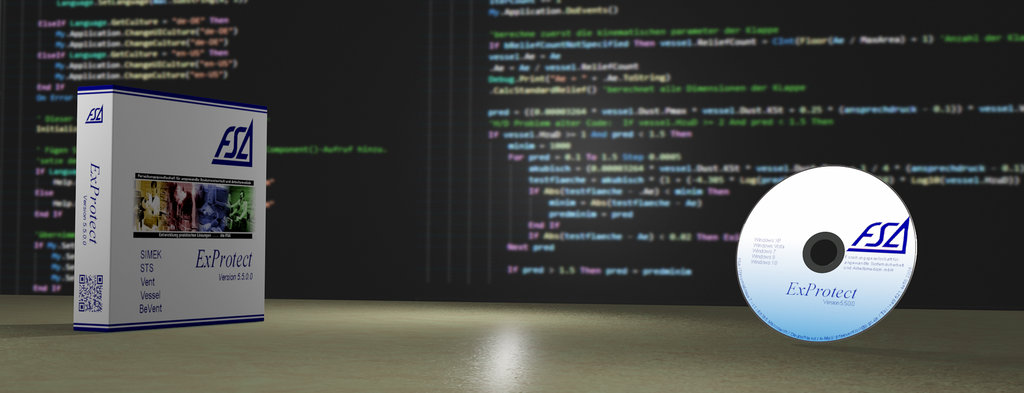The answer to important questions on applied explosion protection
With our ExProtect software package, we provide plant operators and engineering offices with a helpful tool for practical application in their operations. Using ExProtect you can calculate how pressure relief areas with and without explosion dampers must be designed for buildings, silos and elevators according to different calculation methods. Furthermore, the estimation of pressure curves in vessels, the dimensioning of explosion flap hinges, the calculation of debris flight distances, the design of pressure vessels and much more is possible. With our software, you have a simple and practical tool at hand that you can use to optimize explosion protection in your company.
The research results obtained in the course of an extensive study by FSA on the mechanics of pressure relief flaps and covers formed the basis for the development of the software. The program, which is constantly being developed further, consists of the five subprograms (modules) SIMEK, STS, Vent, Vessel and BeVent. In addition, research is being conducted to model flame front velocity in combustible dust-air mixtures. At the end of the project, there is to be a new software module.
Module overview ExProtect
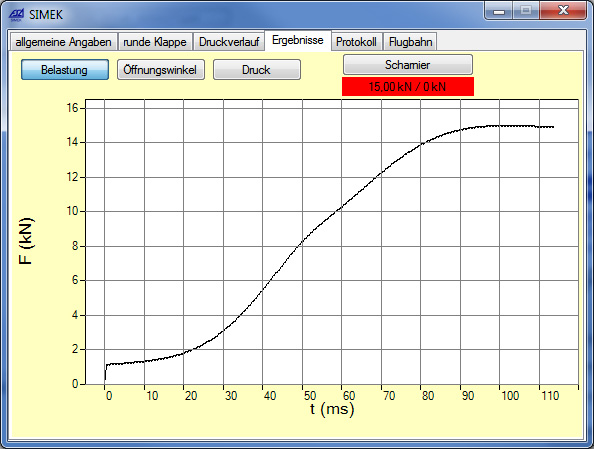
SIMEK is used to calculate pressure vent areas in potentially explosive spaces and silos when explosion doors are used as pressure venting devices. In the course of this, the venting capability of the explosion doors, the reduced overpressure that occurs and the reduced rate of pressure rise in the vessel are output. In addition, SIMEK calculates the temporal course of the force acting on the explosion door fastenings (hinges, ropes) during the pressure venting process. SIMEK then offers the option of adapting hinges or steel cables to the occurring load. In case of too weak anchorages of the vent elements (tear-off), the trajectories of these elements can be calculated.
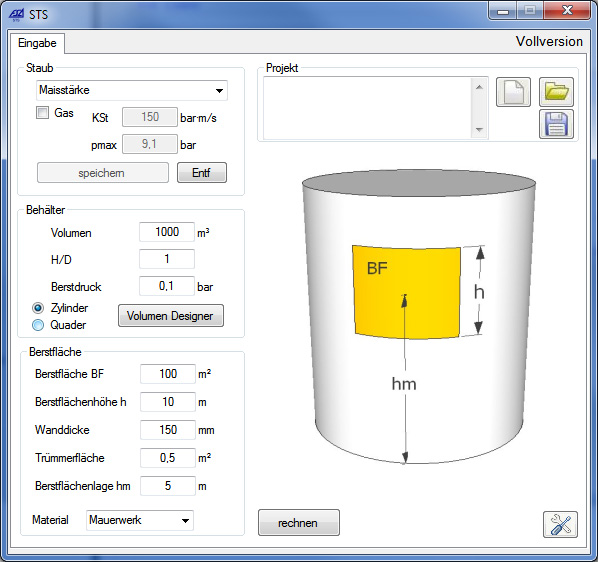
STS calculates the most probable and the maximum possible flight distance of debris when large parts of buildings or containers are destroyed by the effect of dust explosions inside them. The figure shows the input window of STS. Here, the surface shown in yellow is blasted out of the wall of a cylindrical container.
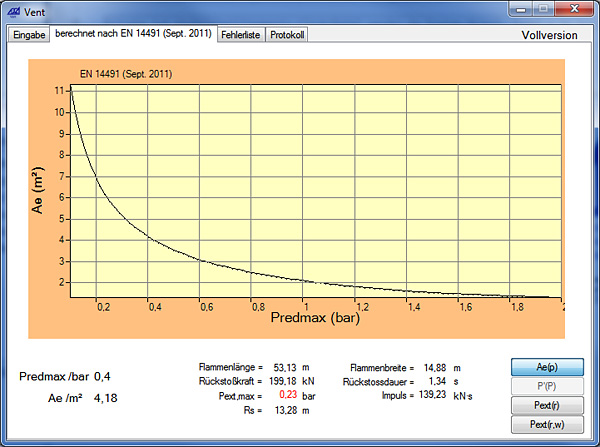
Vent is used to calculate pressure relief areas or reduced overpressures in potentially explosive atmospheres and silos. The calculation methods used are based on equations known from the relevant literature. The following methods are included:
- DIN EN 14491:2012
- DIN EN 14994:2007
- VDI 3673:2002 and 1995
- NFPA 68 Edition 2018, 2007 and 2002
- Equations according to Prof. Dr. S. Radandt
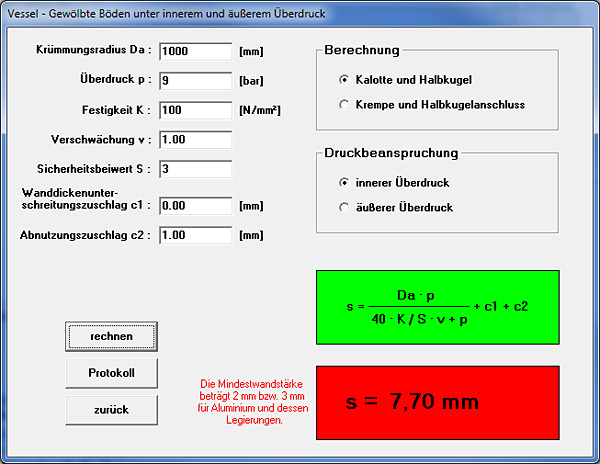
Vessel supports the sizing of pressure vessels, using well-known methods from the literature.
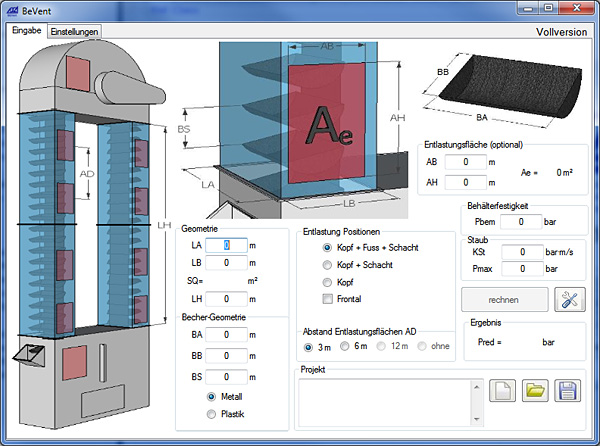
BeVent is a module for calculating the relief of bucket elevators. The calculation methods are based on a research report by FSA, which became a VDI guideline (VDI 2263 Sheet 8.1 of March 2011).
Download
Our current version 5 includes calculation methods according to the latest standards and guidelines, a new volume designer and a new module which is used to design pressure relief on bucket elevators.
To test the software, install the latest version for Microsoft Windows. It will then run in demo mode. By entering a license key, which can be purchased, the demo version is converted into a full version.
Licenses and prices
Prices, license models and system requirements can be found in the following file:

